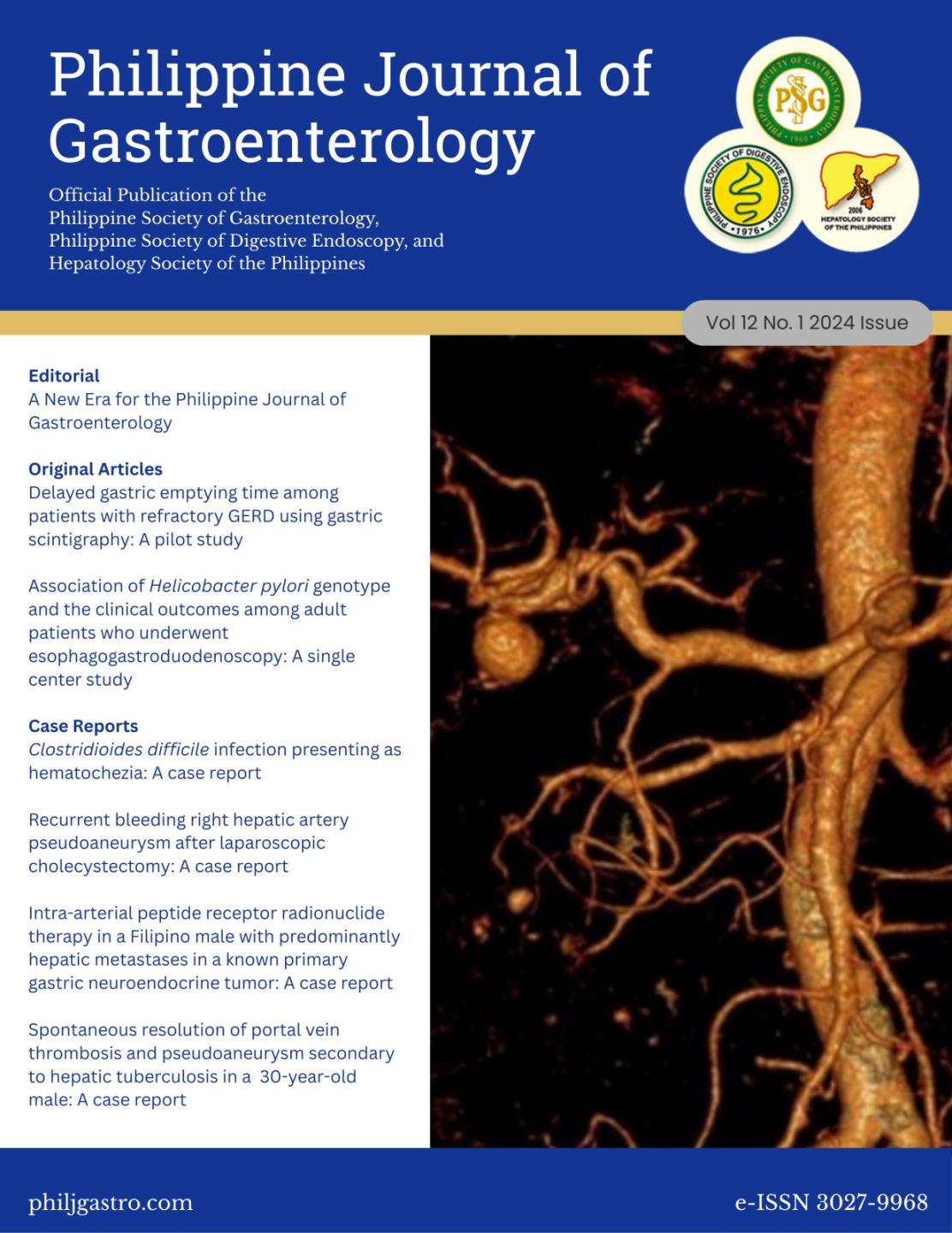Association of Helicobacter pylori genotype and the clinical outcomes among adult patients who underwent esophagogastroduodenoscopy: A single center study
Keywords:
H. Pylori, Helicobacter pylori, cagA, vacA, H. pylori genotypes, Helicobacter pylori genotypes, Philippine H. pylori genotype, H. pylori genotypes and antibiotic sensitivity, H. pylori genotypes and treatment outcome, H. pylori genotypes and mucosal changesAbstract
Background: Local studies describing the presence of different genotypes of H.pylori and their associations with different outcomes are currently not available in the Philippines. Current data shows that cagA gene and vacA s1a/m1 gene positivity are associated with a greater disease activity and has the highest risk for gastric cancer development. This study aims to determine the different H. pylori genotypes present among infected individuals and its relationship with the different outcomes such as histologic changes, treatment response, and antibiotic sensitivity.
Methods: This is an analytical cross sectional study that included subjects who had undergone gastroscopy from the year 2017 to 2019 and whose data are recorded in a registry. Aside from gastroscopy, these subjects had undergone histopathology, genotype identification, antibiotic sensitivity testing and test for H. pylori eradication. Fisher’s Exact test was used to test for association.
Results: A total of 110 subjects were included in this study. Fifty-nine percent were female and 55% were within the age 40 to 59. All patients have data on cagA and 43% were cagA positive. Fifty-two percent (n=48/92) were vacA positive with s1a/m2 as the major subunit present (31%). Forty-one percent of the subjects have moderate inflammation and 23% have intestinal metaplasia. Fifty-three subjects have data on treatment response with 87% cure rate. Of the 54 patients with data on antibiotic sensitivity, 48%, 57%, 4%, and 22% have resistance to Metronidazole, Levofloxacin, Tetracycline, and Clarithromycin, respectively. No resistance to Amoxicillin was observed. Positive cagA was associated with intestinal metaplasia and moderate inflammation (p=0.001). Positive vacA was also associated with moderate inflammation (p=0.001); however, no association was seen when analyzed according to vacA subunits. When analyzing the subjects according to cagA plus vacA combination, cagA alone, vacA alone, and subjects who are both gene negative with histologic findings, an association is seen with both gene negative and mild inflammation, vacA alone and moderate inflammation, and to cagA plus vacA combination and intestinal metaplasia (p=0.008). No association was seen between different genotypes, and treatment response and antibiotic sensitivity.
Conclusion: Either cagA or vacA gene positivity can lead to a more active and more severe inflammation compared when both are absent. Both cagA and vacA positivity is also associated with the development of intestinal metaplasia.
Downloads
Published
License
Copyright (c) 2025 Jan Axel Yusi, Edgardo Bondoc

This work is licensed under a Creative Commons Attribution-NonCommercial-NoDerivatives 4.0 International License.


